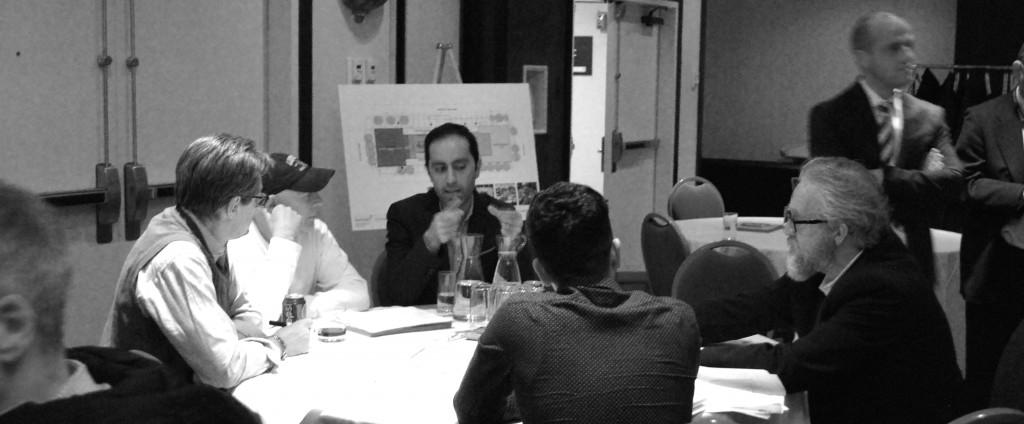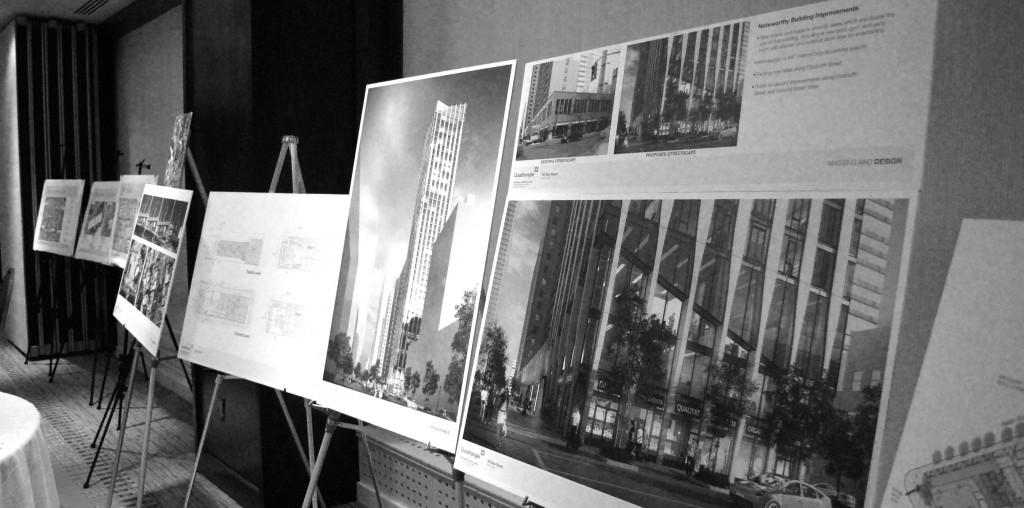"
Even the physical shape of the tables (where no one is at the head of the table and all voices are equal) helps to nudge the dynamic into a more collaborative dialogue."

Architects have long had a complicated relationship with the public’s participation in the design process. On the one hand, many architects such as myself, believe that engaging the community and stakeholders early on ensures that we are responding appropriately to local needs. This helps inform and enrich our design; after all, we got into the profession to meet the needs of the public and we aspire to gain their approval and appreciation. On the other hand, there is concern at times that design concepts can get watered down when trying to satisfy all concerned voices. A major part of role is to continue to strive to have visions realized without getting influenced by what could be at times short-sighted influence.
The city of Toronto continues to take community engagement and public consultations very seriously. Under the Planning Act, public consultations need to be held for any Official Plan or Zoning By-Law Amendment applications. Most development applications involve one or more of these meetings; and the people of Toronto have proven to be very engaged. Ranging from the very concerned to the merely curious, one recent large development proposal attracted over 500 attendees to a public meeting. To date, a ‘Town Hall’ format has been the predominant forum used by the City to integrate public and community feedback. But, as cities, stakeholders and the design process evolve new means of facilitating healthy debate and dialogue are beginning to be rolled out, as is the case with new ‘Round Table’ formats.

The Town Hall format involves a few presentations, from both the city and the applicant (mostly represented by the Architect on behalf of a client or developer); this is then followed by a period of questions and answers. Because of the public nature of this format, questions from the audience are predominantly limited to people who are comfortable speaking in public, and subsequently reduces the number and diversity of voices shared in a particular consultation. Also most people speak in public when they have strong opinions, which can mean less nuanced opinions finding their way to the discussion. The format, can also nudge the dynamic into an ‘us vs. them’ proposition, reducing collaboration between key stakeholders and the community in question.
Alternatively, the ‘Round Table’ format involves the same initial presentations by the city and applicant but substitutes the audience questions with a series of round table discussions, with each round table evaluating the design through themes ranging from built form and planning to traffic and sustainability. This dramatically changes the dynamic, as everyone in attendance now gets a chance to voice their opinions and insights in an inclusive and safe environment that promotes a more focused dialogue. Even the physical shape of the tables (where no one is at the head of the table and all voices are equal) helps to nudge the dynamic into a more collaborative dialogue. At the end of the session, representatives from the city, summarize to all attendees what was discussed at each table.

The ‘Round Table’ format can pose a logistic challenge with a large turnout, but it’s a more productive arrangement than the traditional town hall format. In the case of a large turnout, there are hybrid methods that still allow people to be divided into smaller discussion groups, to give as many people as possible the opportunity to participate. Taking advantage of online discussions and surveys prior to the meeting are additional measures that help accommodate and manage the many voices that need to be heard.
Our role is multi-faceted and we operate out of a pivot spot, between our clients, the municipality and the diverse communities in which we build. Public consultations are opportunities to engage our designs with passionate city builders and community representatives to gain insight and feedback that evolve both the built form and surrounding public realm of any given site or project for the net benefit of all involved.
